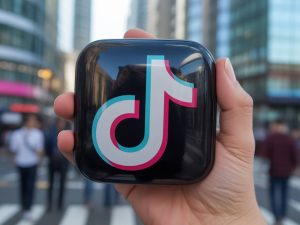Best adsense alternatives for monetizing your website in 2024

Best adsense alternatives for monetizing your website in 2024
Why Look Beyond AdSense in 2024?
Let’s face it — Google AdSense has long been the go-to monetization option for content creators worldwide. But 2024 is a different game altogether. RPMs are down, ad blocks are up, and policy headaches can smack your revenue overnight. Sound familiar?
If you’re depending solely on AdSense for monetizing your traffic, you’re sitting on a one-legged chair. Diversifying income streams isn’t just smart — it’s survival. Whether your site is niche-focused or a high-traffic content magnet, this guide will break down the top AdSense alternatives that actually make sense in 2024.
What Makes a Good Adsense Alternative?
Before diving in, let’s define the benchmark. A good AdSense alternative should offer:
- High RPMs: comparable or better than AdSense, adjusted for geography and niche.
- Easy integration: no dev degree required to implement the code.
- Flexibility: control over ad formats, placement, and frequency.
- Payout reliability: no surprises come payday.
With that scoreboard in mind, let’s explore what 2024 has to offer.
Ezoic: AI Optimization Done Right
If you have at least 10,000 monthly visits, Ezoic can be a powerful step up from AdSense. It uses machine learning to test multiple ad placements and formats to maximize revenue per visitor. Their dashboard feels geeky at first, but it lets you control everything — from user experience scores to ad density limits.
Pros:
- Boosts RPM through advanced A/B testing.
- Google Certified Publishing Partner.
- Access to additional monetization tools (video ads, mediation, etc.).
Not-for-you-if: You have super-low traffic or hate tweaking settings. It’s not a fire-and-forget platform.
Media.net: Contextual Targeting à la Yahoo/Bing Style
Media.net thrives on contextual relevancy — the kind that crawls your content for intent and matches ads to it. It performs well with long-form articles and informational blogs, especially those in finance, tech, or education.
Pros:
- Higher RPMs on English-speaking traffic (especially US, UK, CA).
- Beautiful native ad designs that blend with your layout.
- Easy approval process. No 30-day sandbox.
Caveat: Asian and non-Western traffic tends to yield poor results. Also, tier-1 advertiser demand is good — but not AdSense-level massive.
Raptive (formerly AdThrive): Premium for Premium
If your blog’s traffic is primarily from the US and clocks over 100,000 monthly pageviews, Raptive is a no-brainer. Their partnership model means they treat your site like a business partner, not just a publisher.
Pros:
- Consistently among the highest RPMs across niches.
- Dedicated account managers and transparency.
- Focus on brand-safe, high-quality advertisers.
Downside: The barrier to entry is high, and approval can feel like college admissions. If you haven’t built a strong audience yet, keep this one on your future roadmap.
SheMedia: Monetization Tailored for Female Audiences
SheMedia specializes in monetizing female-centric content — think parenting, lifestyle, wellness, beauty. If your audience aligns, SheMedia can easily beat your AdSense RPMs with better brand deals and specialized campaigns.
Pros:
- Access to exclusive brand campaigns in women-driven niches.
- Strong performance on U.S.-based traffic.
- Video and social monetization add-ons.
Be aware: Male-dominated or technical content tends to underperform here. Know your audience before applying.
Monumetric: Designed for Growth-Minded Publishers
Monumetric is all about balancing UX and RPM. With clear placement strategies and dedicated onboarding, publishers often see 2x–3x what they’d earn with AdSense — without overwhelming users with clutter.
Pros:
- Customized ad strategies for each site.
- Great support and onboarding process.
- Multiple ad revenue types (display, video, native).
Entry barrier: 10,000 pageviews/month minimum. Also, there’s a $99 setup fee for sites under 80k views — one of the few platforms that charges that upfront.
PropellerAds: Monetize Everything (Even the “Ugly” Traffic)
Got tier-3 traffic from mobile or developing countries? PropellerAds makes it work. It’s the king of PopUnder, push notifications, and interstitials — formats Google tends to hate but that can be very profitable when done right.
Pros:
- Instant activation and no traffic minimum.
- Pays well for geo-diverse audiences.
- Multiple ad formats ideal for mobile-heavy sites.
Heads-up: Pop-based monetization can affect user trust and bounce rates. Don’t overdo it – especially if you’re building an authority site.
Sovrn //Commerce (ex-VigLink): Passive Affiliate Magic
Tired of inserting affiliate links manually? Sovrn //Commerce scans your content, detects brand/product mentions, and transforms them into affiliate links. Great for evergreen lifestyle, fashion, and tech content.
Pros:
- Set-it-and-forget-it monetization.
- Access to thousands of affiliate programs.
- No need to have direct affiliate accounts with each merchant.
Tip: Pair this with informational blog posts (“Top 10 tools,” “Best gadgets under $50”) to passively earn commissions at scale.
BuySellAds: Sponsorship-Centric Monetization
If you’ve got a niche audience — developers, designers, crypto enthusiasts — BuySellAds connects you directly with advertisers looking to place high-visibility banner ads and sponsored content.
Pros:
- Transparent pricing — you control how much you charge.
- No middle-agency sucking up your margins.
- Great for authority/brand-driven sites.
Note: BuySellAds works best when you have engaged audiences and strong analytics. It’s not the best option for high-volume but low-engagement traffic.
Tips for Maximizing Revenue With These Alternatives
You don’t have to choose just one platform. In fact, stacking and segmenting revenue channels is often the sweet spot. Here’s how you can get the most out of these alternatives:
- Test ad placements: Tools like Google Optimize and Ezoic’s LEAP can improve revenue without hurting UX.
- Mix formats: Combine display ads with affiliate links and sponsored content.
- Segment by geo: Use different ad partners for different countries. PropellerAds for tier-3, Raptive or Ezoic for tier-1.
- Optimize for speed: Bloated ad scripts kill load times, and slow sites lose revenue. Use lazy loading and compression tools.
Remember: more ads ≠ more money. Prioritize strategic placement and relevance over volume.
The Bottom Line
In 2024, relying solely on AdSense is like building on a single pillar — fragile and short-sighted. Whether you’re running a passion blog or a content empire, these monetization options provide flexibility, higher earnings, and — most importantly — control over your revenue streams.
Test aggressively, track obsessively, and don’t be afraid to pivot. There’s no silver bullet — but the right mix of platforms can turn your traffic into real, recurring revenue.
Got wins (or horror stories) with one of these platforms? Share them — feedback loops are the real growth hacks.





